I’m cross-posting this here at FRI because there seem to be more interest in the Saracha Bridge collapse than my little server at MIT can handle. You can find the original post at amy.fablab.af. Update: Download an extended set of photos from the collapsed Saracha Bridge (49 photos, 13.4MB).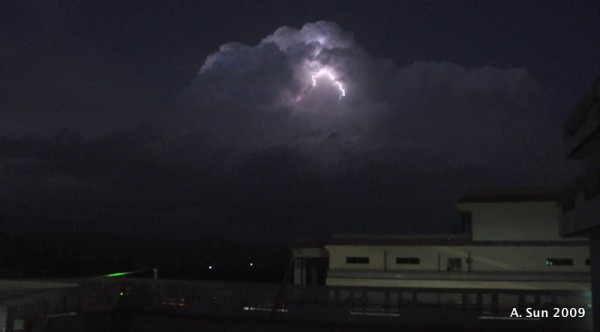
Early in the morning of 8/31 a giant thunderstorm rolled in and dumped a stunning amount of water on us. High winds blew open my window which woke me up briefly enough to see the absolute solid wall of water as if Shem’s house had been moved under a waterfall. Lightning lit up the sky with such frequency it was nearly daylight.
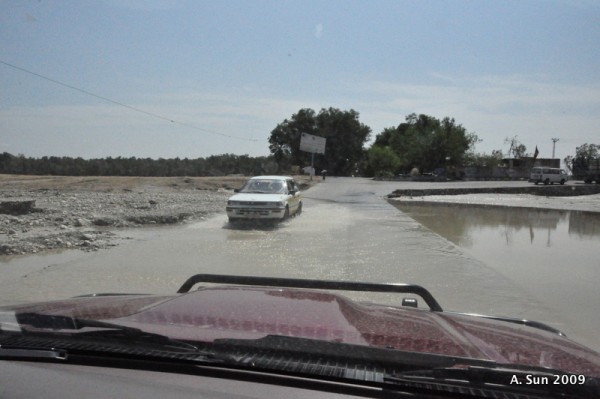
The next morning Logan asked if it had rained the previous night. The concrete houses are sound insulated enough that on the first floor I would have slept through the storm too had my window not blown open. The front yard didn’t look too different but once the front gates were opened we could see that Jalalabad had been flooded.
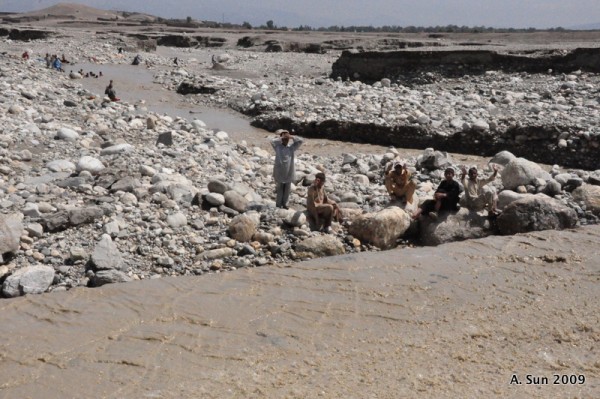
All over Jalalabad culverts overflowed, low areas became rushing rivers, mud walls melted, and houses were damaged or destroyed. The biggest casualty was Saracha Bridge, about 1 km east of FOB Fenty towards Torkham. Tim and I went out to see the bridge a day later and found two and three story tall bridge footings washed down river and most of the bridge completely gone. The river looks innocent and small, only the near opaque turbidity gives away upstream mischief. Brick archways and stone footings are stranded on dry rock in what now looks like a dry river bed.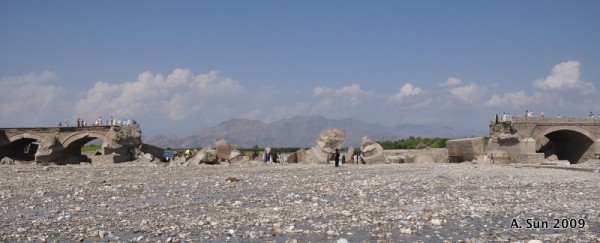
The initial ANSO report implied some damage that would be fixed within a day, which in Afghanistan usually might mean a week or so. I couldn’t remember a significant bridge to the east of the customs house because the road bed is wide and the approach to the bridge is long and gentle. We were unprepared for what we saw and initially I didn’t even realize that the enormous expanse had a bridge suitable for heavy truck traffic spanning it only a day before.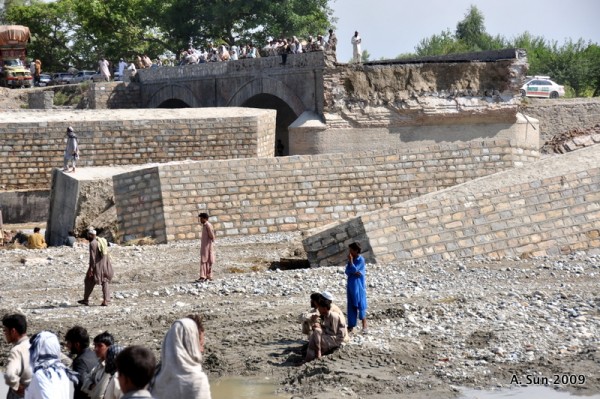
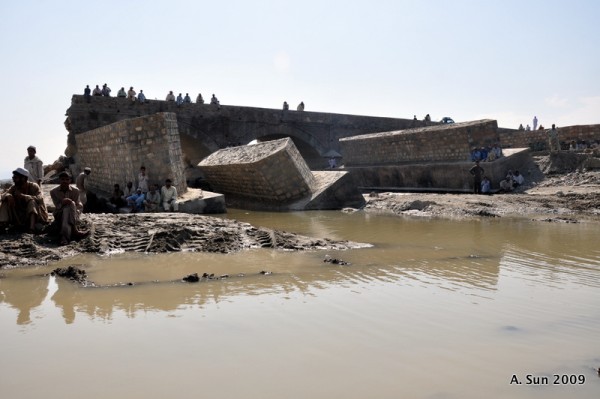
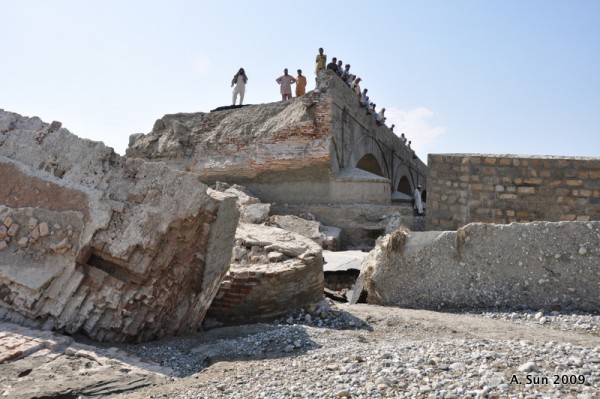

There were trucks everywhere, pulled on to the side of the road on both sides of the bridge. Some tried to use smaller roads to the north or south as bypasses but upstream and downstream bridges were questionable themselves. The bypasses were not necessarily a great choice because the heavy trucks made big muddy ruts in the small dirt roads. So most cars and trucks opted to try their luck simply driving across the river after the water level went down.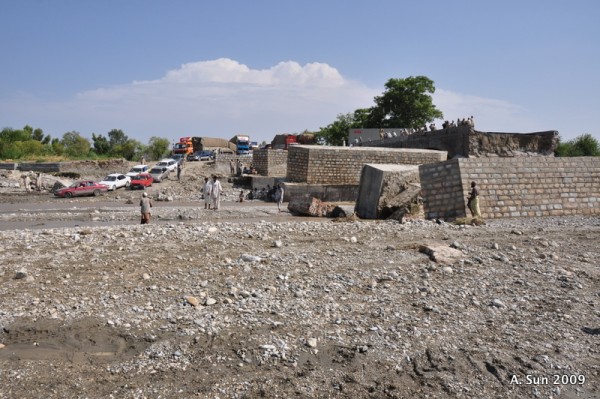
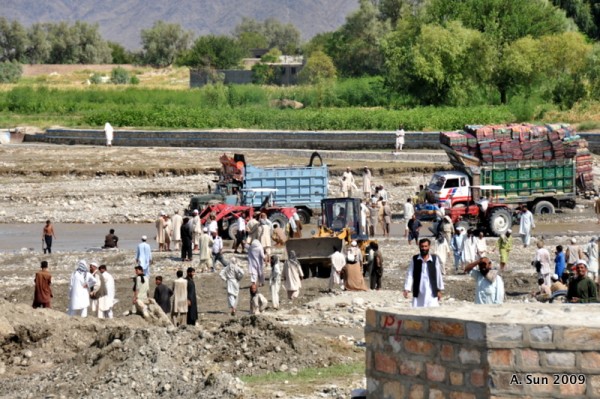
Several bulldozers had arrived and were making ramps down and up the banks to make it easier for the vehicles to get down to the stream bed. While we watched, about 2 in 3 cars or trucks made it through ok, sometimes with a little help from the masses of Afghans who had collected to watch and see if anything exciting might happen. A handful of jingle trucks seemed to be pretty stuck.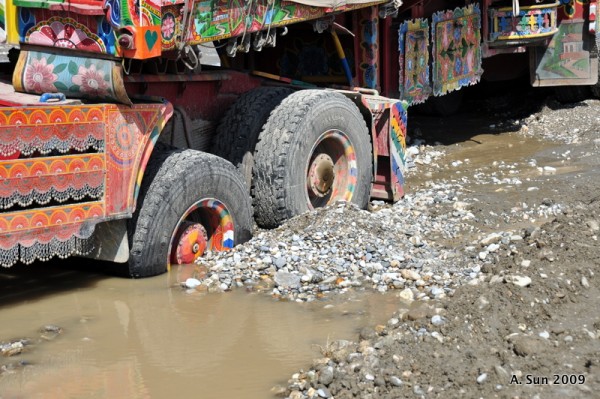



The Thunder Run has linked to this post in the blog post From the Front: 09/02/2009 News and Personal dispatches from the front and the home front.
What’s the status of the bridge now?